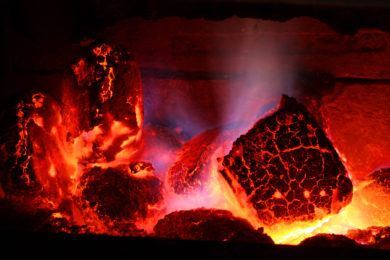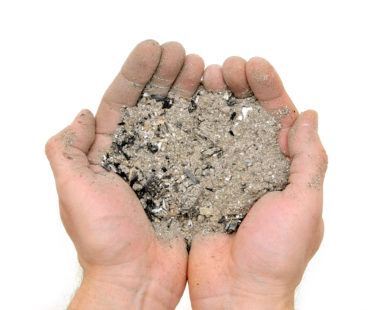What is Incineration Ash?
Waste-to-energy (WTE) incineration is the process of burning waste materials to produce heat that can thereafter be used to evaporate water and generate steam. As in coal and nuclear energy generation processes, that steam can be used to power a steam turbine which in turn generates electrical energy. However, because the WTE incineration process burns materials to create energy, ash is produced as a by-product.
In general, the residual incineration ash is approximately 10% the volume of the input waste and 30% its mass (as the ash tends to be denser than the original material). Thus, WTE incineration, while sustainable in the sense that it uses waste materials as an energy source and thereby reduces waste-to-landfill conversion and fossil-fuel utilization, it does generate a significant amount of waste ash per input volume.
Types of Incinerator Ash
WTE incineration ash can be divided into two main categories: incinerator bottom ash (IBA) and air pollution control (APC) residues. These two types of incineration ash differ in their mode of generation as well as in their subsequent utilization and disposal.
IBA Generation
As its name suggests, IBA is the ash that forms at the bottom of an incinerator from heavy components that are neither combustible nor volatile. IBA typically contains valuable glass, porcelain, and metal components that can be reclaimed.
APC Residue Generation
APC residue, which is also referred to as fly ash, is the ash derived from the fumes of the incineration process. Although there are not as many valuable components in fly ash as there are in IBA, fly ash must be processed effectively to prevent polluting the surrounding area.
Incinerator Ash Treatment and Recycling
Because of the vast quantities of ash produced during WTE incineration, effective methods of ash disposal and utilization are imperative. As mentioned, IBA and APC residues are handled differently after they exit the incinerator.
IBA Processing and Recycling
IBA contains useful materials, so rather than simply disposing of it in a landfill, IBA often undergoes further processing to reclaim those materials. For example, once the IBA is funneled from the incinerator, a magnet is passed over the ash to collect any ferrous metals (e.g., iron, steel). Then, what is left of the ash is passed through an eddy current separator and vibratory screen, to remove non-ferrous metals (e.g., aluminum, copper, brass).
After these two processing steps, the leftover material can find a secondary use as bulk fill in construction. A notable use of processed IBA can be seen in Florida. With the state being the seventh largest producer of incinerator ash per year in the United States, IBA ash is mixed into the concrete and asphalt used to pave roads.
APC Residue Processing
The primary goal of APC processing is the prevention of potential environmental contamination. Ideally, a clean APC residual stream should consist of only carbon dioxide and water vapor. To remove impurities from this stream, APC is first passed through activated carbon, which absorbs any heavy metals (e.g., mercury) present in the gas.
Then, the gas is treated with lime, which neutralizes acidic and sulfur-containing components and produces gypsum. Additionally, a series of fine-mesh filtration steps are used to remove airborne ash from the gas; as with IBA, the ash collected in these steps can be used in construction.
Overall, IBA and APC processing are fundamental in helping WTE companies and facilities reduce incineration-waste byproducts, reclaim valuable materials and prevent potential environmental contamination.
To learn more about WTE fly ash challenges or how you can incorporate new processes and machinery into your WTE process, contact our resource recovery experts. Our team has decades of experience in building equipment you can rely on to handle this abrasive, tough environments.








